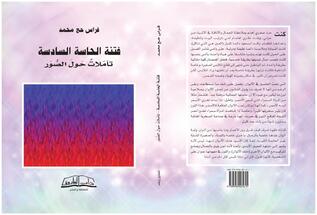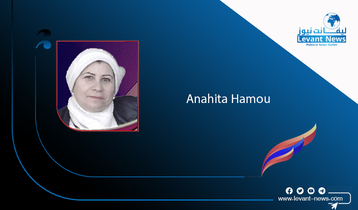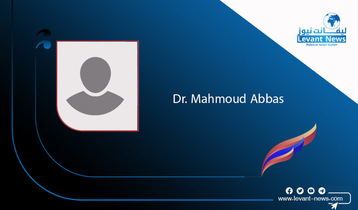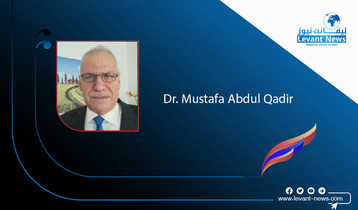-
Once again, the Lebanese people must choose: Justice and accountability, or civil peace

According to the World Bank document: “the Spring 2021 Lebanon Economic Monitor” found that Lebanon economic and financial crisis is likely to rank in the top 10, possibly top three most severe the world has seen since the mid-19th century. Between a lack of foreign currency and extreme fuel shortages, residents are often receiving just two hours of electricity a day.
Lebanon was ranked 149 out of 180 in Transparency International's 2020 corruption index. The Lebanese regime has a long history with corruption, nepotism and an entrenched political class. Many leadership posts have been held by the same elite since the 1975-90 civil war. They seek power and dominance primary through bribery and other corrupt practices, winning their legitimacy through the promises of increasing the representation of their political/religious sects. For example, Nabih Berri, the leader of the shiia movement Amal and the speaker of the Lebanese parliament has been in office for well over 30 years. Hassan Nassralah, the leader of the shiia party Hezbollah, has been the Secretary General of the party since the Civil War. Also the Christian leader, Samir Geagea has been the leader of the Lebanese Forces since the Civil War as well. Currently, Lebanon has 18 officially recognized religious sects, most of which belong to different dominations of Islam and Christianity.
To explore the motivation that led to the fragility of the Lebanese state and the domination of the current Lebanese political elite, I review the historical conditions that led to the formation of the Lebanese population and the implementation of the Lebanese nation-state.
Difference and Sameness theories played an important role to explain societal cohesion and political integration. In Europe, during the process of the formation of modern state-nations that attempted to create a homogenous nation by religious criteria the fact that led to several massacres, expulsions and forced conversions of many religious minorities. A higher degree of cultural sameness was one of the main requirements that characterized the formation of the modern nation-state. For example, the unification of the language was an important part of this project in which the integration of the people need a certain kind of sameness along important lines of classifications. In contrast to the nation-state, empires are always ethnically heterogeneous. Also, integration through difference that was developed under conditions in which ethnically heterogeneous societies and political factions have a certain kind of peaceful coexistence over long periods of time.
The Ottoman Empire had the millet system that defined differences along religious lines, maintaining a certain kind of interaction between different groups, in which the major distinction was between Muslims and non-Muslims, but the empire did not deny the ethnic identity of the local communities but in fact strengthened it. The millets were discrete unities, administrated and represented by their religious leaders which interacted with the state, each group had its own legal system for personal status law. While, the post-ottoman empire era experienced massive displacements, movements, and exchanges of people as a process of homogenization during the formation of the new state nations. After World War one, on April 28, 1920, the victorious Supreme Allied Council met in San Remo, and entrusted France with a mandate over present-day Lebanon and Syria. On September 1, 1920, the French High Commissioner, General Gouraud officially declared the foundation of Greater Lebanon, which would include the towns of Beirut, Tripoli, Sur, and Saida, the territory of Mount Lebanon, the regions of the Biqa` and Ba`albak, and the districts of Hasbayya andRashayya. The foundation of the new state changed the status of the local communities between majority and minority, for example, the Maronite Christians fell from 80 per cent of the population to a 51 percent majority of the Mount Lebanon province. Christian sects were mostly allegiance toward the French mandate while Muslim sects were against. The French mandate created a consultative council that was formed by 17 members who represented the different Lebanese religious sects.
The Republic of Lebanon was founded in 1943 after the withdrawal of the French mandate. With a population that had had no common history as a political unit that could introduce a common identity, an unwritten national pact was established between President Bishara al-Khuri and Prime Minister Riad al-Sulh, designing specific government leadership roles based on religious sect:
• President of the Republic: Maronite Catholic.
• Prime Minister: Sunni Muslim.
• Speaker of the Parliament: Shii´ a Muslim.
The National Pact established the ratio of Christian to Muslim representatives in Parliament at six to five, the number of seats per community being set by law. Political leaders used patronage andintimidation to secure the election of their lists. Candidates on the list were guaranteed support across their religious communities.
Lebanon is one of the few countries that faced high refugee influxes from its surrounding countries, but the main fears of the local population was the drastic demographic shift that can change the ethno-religious balance of the country. In other words, refugees were welcomed or rejected by the local population according to their religious/political sect. The first mass exodus to the country was the Palestinian refugee influx in 1948 then 1967. In 2011, a new influx of Syrian Refugees who had escaped from the current Syrian civil war. The Christian sects in Lebanon have more fears toward refugee’s influxes while Sunni Muslims are not opposed to refugee settlements in Lebanon. On 13 April 1975, the Lebanese civil war broke out. The Phalangists, a Christian militia, clashed with Palestinian groups over their armed struggle against Israel from Lebanese territories. Finally, the conflict turned into a fight over the Lebanese state and its political sectarian system. The war was ended by al Ta´if agreement in 1989 when members of the Lebanese Parliament met in Ta’if in Saudi Arabia. The Agreement maintained the same sectarian power-sharing system, but redistributed domestic political power among the major confessions Maronite Christians, Sunni Muslims, and Shi’a Muslims. But the Sectarian political system remained under the older Civil War generation that with the eruption of any crisis each leader try to blame the leaders of the other political sects, accusing them with corruption, transforming the issue from cases of corruption to a sectarian conflict.
Once again, the Lebanese people must choose: justice and accountability, or civil peace. On Thursday, October 14th, the two Shiite parties, the militant Hezbollah party (backed by Iran) and the AmalMovement organized a protest demanding the removal of the judge leading the investigating the explosion that ripped through the city's port. Hezbollah accused the Lebanese Forces led by Samir Geagea (as pro-American and pro-Saudi ) , of mounting the attack, which took place on the historical frontline of the 1975-90 civil war. Recently, Nassralah has declared for the first time that Hezbollah has 100,000 trained fighters, commenting on a report that Samir Geagea had urged that his Lebanese Forces party currently has 15,000 fighters.
• Lebanon Economic Monitor, Spring 2021: Lebanon Sinking (to the Top 3) (worldbank.org)
• Corruption Perceptions Index 2020 for Lebanon - Transparency.org
• Benjamin Thomas White, The Emergence of Minorities in the Middle East The Politics of Community in French Mandate Syria, University of Birmingham 2012
• Günther Schlee and Alexander Horstmann, Difference and samenessas modes of integration : anthropological perspectives on ethnicityand religion, New York ; Oxford : Berghahn, 2018
• Hudson Lebanese Civil War, 1975–1990: Case Outcome: COIN Loss (Mixed, Favoring Insurgents), 1978
• Kamal S. Salibi. Crossroads to Civil War: Lebanon, 1958–1976. Delmar, N.Y.: Caravan Books. 1976
• Judith P. Harik, THE EFFECTS OF THE MILITARY TRADITION ON LEBANON'S ASSERTIVE
DRUZES, Article in International Sociology 10(1):51-70 · March 1995
• Rebecca Bryant, Post-Ottoman coexistence: sharing space in the shadow of conflict, Berghahn Books, New York, USA, 2016
• T. Darwish and G. Faour, RANGELAND DEGRADATION IN TWO WATERSHEDS OF
LEBANON, Lebanese Science Journal, Vol. 9, No. 1, 2008
• Ralph E. Crow, Religious Sectarianism in the Lebanese Political System, The University of Chicago Press 1962
• ZAMIR, M. The Formation of Modern Lebanon London; CroomHelm, c1985.

BY: Mark Magdy Sweha
You May Also Like
Popular Posts
Caricature
BENEFIT Sponsors BuildHer...
- April 23, 2025
BENEFIT, the Kingdom’s innovator and leading company in Fintech and electronic financial transactions service, has sponsored the BuildHer CityHack 2025 Hackathon, a two-day event spearheaded by the College of Engineering and Technology at the Royal University for Women (RUW).
Aimed at secondary school students, the event brought together a distinguished group of academic professionals and technology experts to mentor and inspire young participants.
More than 100 high school students from across the Kingdom of Bahrain took part in the hackathon, which featured an intensive programme of training workshops and hands-on sessions. These activities were tailored to enhance participants’ critical thinking, collaborative problem-solving, and team-building capabilities, while also encouraging the development of practical and sustainable solutions to contemporary challenges using modern technological tools.
BENEFIT’s Chief Executive Mr. Abdulwahed AlJanahi, commented: “Our support for this educational hackathon reflects our long-term strategic vision to nurture the talents of emerging national youth and empower the next generation of accomplished female leaders in technology. By fostering creativity and innovation, we aim to contribute meaningfully to Bahrain’s comprehensive development goals and align with the aspirations outlined in the Kingdom’s Vision 2030—an ambition in which BENEFIT plays a central role.”
Professor Riyadh Yousif Hamzah, President of the Royal University for Women, commented: “This initiative reflects our commitment to advancing women in STEM fields. We're cultivating a generation of creative, solution-driven female leaders who will drive national development. Our partnership with BENEFIT exemplifies the powerful synergy between academia and private sector in supporting educational innovation.”
Hanan Abdulla Hasan, Senior Manager, PR & Communication at BENEFIT, said: “We are honoured to collaborate with RUW in supporting this remarkable technology-focused event. It highlights our commitment to social responsibility, and our ongoing efforts to enhance the digital and innovation capabilities of young Bahraini women and foster their ability to harness technological tools in the service of a smarter, more sustainable future.”
For his part, Dr. Humam ElAgha, Acting Dean of the College of Engineering and Technology at the University, said: “BuildHer CityHack 2025 embodies our hands-on approach to education. By tackling real-world problems through creative thinking and sustainable solutions, we're preparing women to thrive in the knowledge economy – a cornerstone of the University's vision.”
opinion
Report
ads
Newsletter
Subscribe to our mailing list to get the new updates!






















